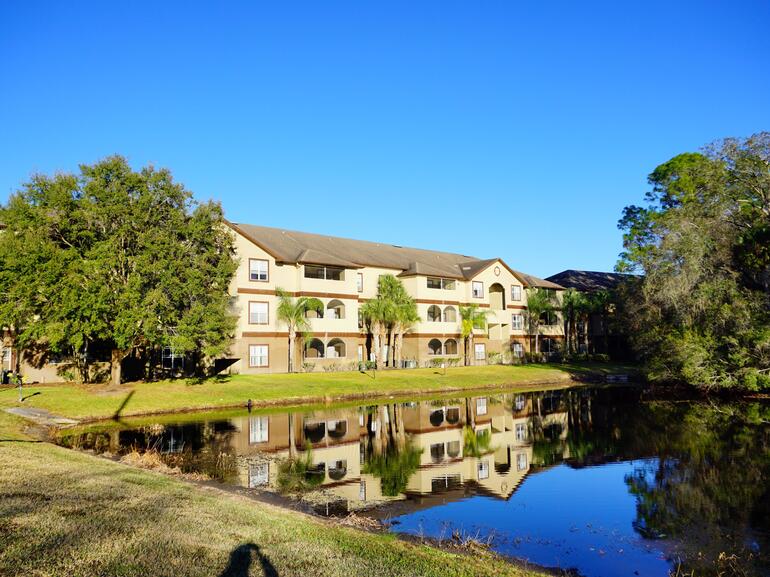Multifamily Lending Market: Expert Advice for Smarter Investing

Multifamily properties will remain highly sought-after in 2025, allowing commercial real estate (CRE) investors to generate revenue from multiple units simultaneously. For investors interested in this potentially lucrative asset class, it's essential to understand recent trends before shopping for new debt. We talked to Jesse Lemos and William Rhett about the state of the multifamily lending market so investors can make smarter and more strategic decisions.
Trends Shaping the Broader CRE Lending Market in 2025
When it comes to financing multifamily investments, Lemos says the Agencies will continue to be aggressive on permanent loans that are mission driven, while life insurance lenders are likely to remain conservative in their underwriting standards for this structure. Overall, lenders are prioritizing stabilized assets in strong growth markets and are looking for quality in both assets and borrowers.
Bridge lenders are still very active in the lease-up acquisitions or refinance out of their construction loans.
Also, expect an uptick in life company/debt funds, which will fill the gap left by regional banks pulling back on construction and transitional assets.
"Lenders are eager to put dollars out and continue to get creative with their offerings," Lemos says.
Risks and Challenges for Multifamily Investors
Access to capital remains constrained, meaning a potentially higher cost of borrowing for multifamily investors. Another challenge is the gap between seller and buyer expectations, although the ownership market is realizing that rates are going to stay higher for longer.
"We do see some easing in groups willing to sell for a lower price,” says Lemos. “Rate volatility is causing lenders to proceed cautiously. To navigate market uncertainties, I recommend starting with conservative underwriting and stress-testing your deals at higher rates."
Rhett agrees and shares that "relationships matter more than ever with the current state of the market."
Property and Lender Types to Look Out for in 2025
There's a growing interest in build-to-rent communities in suburban areas, which may offer stable, long-term tenants and potentially higher rents.
"Value-add deals are also compelling as new construction remains challenging to pencil," Rhett adds.
Regarding lenders, life companies and debt funds are stepping up where banks have recently pulled back, especially for core assets or transitional projects with solid sponsors. These non-bank lenders may move faster than their traditional counterparts, helping investors close deals on multifamily investment properties quickly.
Getting the Financing You Need for Your Next Multifamily Investment Property
Lemos and Rhett offer the following advice when approaching a lender:
- Come in with a strong, clear business plan and show you've thought through the risks.
- Demonstrating local expertise or experience with partnerships can provide lenders with greater comfort when underwriting in a turbulent environment.
- Local knowledge gives you an edge. It's all about matching the right capital to the right story.
Case Study: Nashville and the Southeast
We also asked Lemos and Rhett about the state of the CRE lending market across the Southeast and in Nashville, where they call home:
- In the Southeast, especially in Nashville, regional banks have traditionally played a significant role in CRE lending, but many are being more selective post-2023 due to still having outstanding construction loans that are not paying off as quickly as they initially thought.
- Regarding interest rate volatility, Nashville's resilience and steady demand drivers give lenders more confidence than in secondary markets. Lenders are cautious on deals in the core of Nashville due to all the supply that came on the market in the last 18 to 24 months. Those concessions are burning off and should be mostly gone by the end of 2025 due to a large reduction of supply coming online after July.
- Nashville is experiencing continued urban-to-suburban migration, while the Southeast benefits from "demographic tailwinds" and pro-business policies.
"Nashville's growth story is compelling," says Lemos. "Start small, build your track record and be transparent with lenders."
Working With an Expert
Conservative underwriting standards, an uptick in life company/debt funds, rate volatility and other factors will impact CRE lending in 2025, presenting investors with risks and challenges that may not have been present in past years. Partnering with a comprehensive capital markets provider is vital in helping investors achieve their goals by delivering tailored solutions and unmatched access to lenders in any market.


